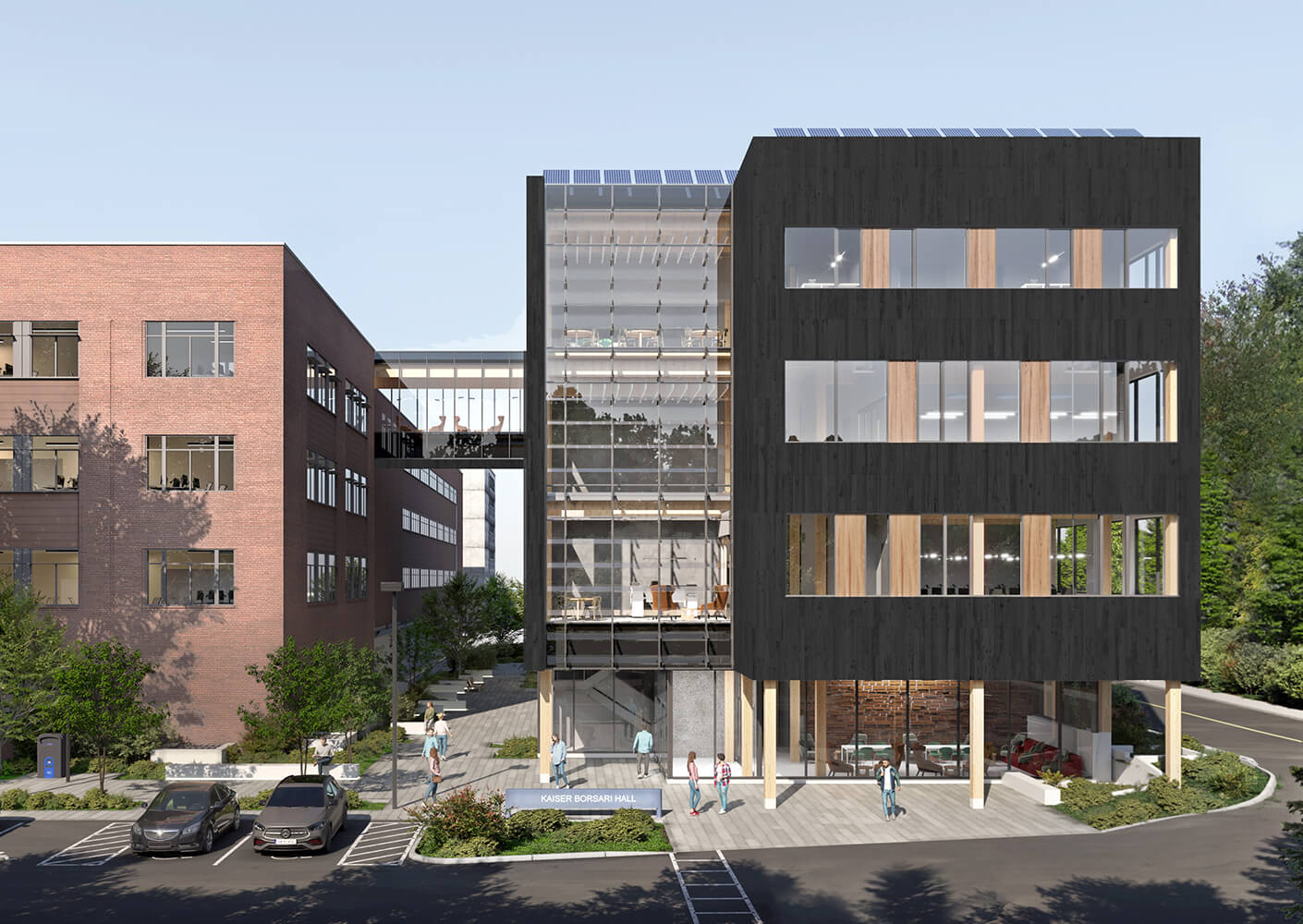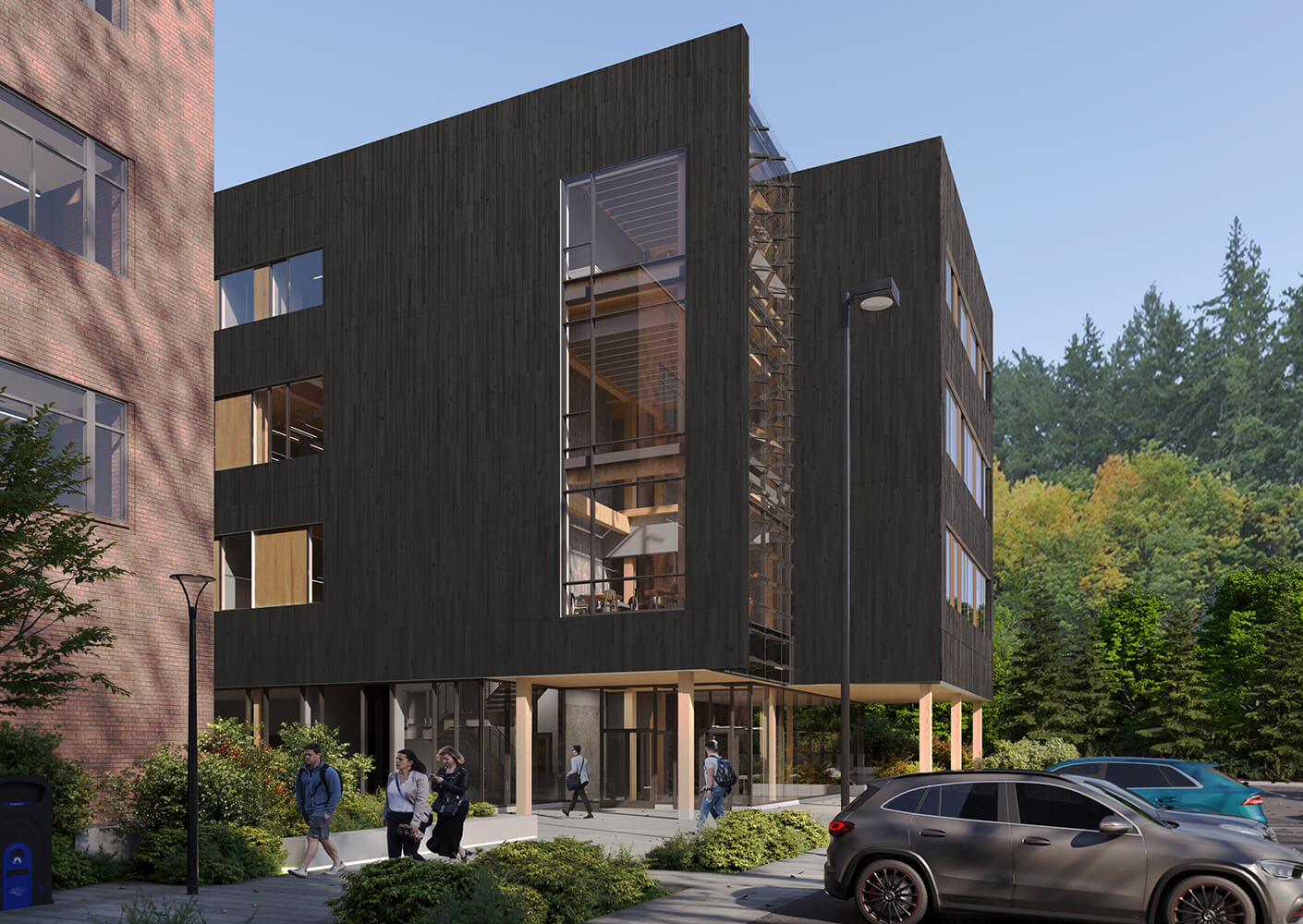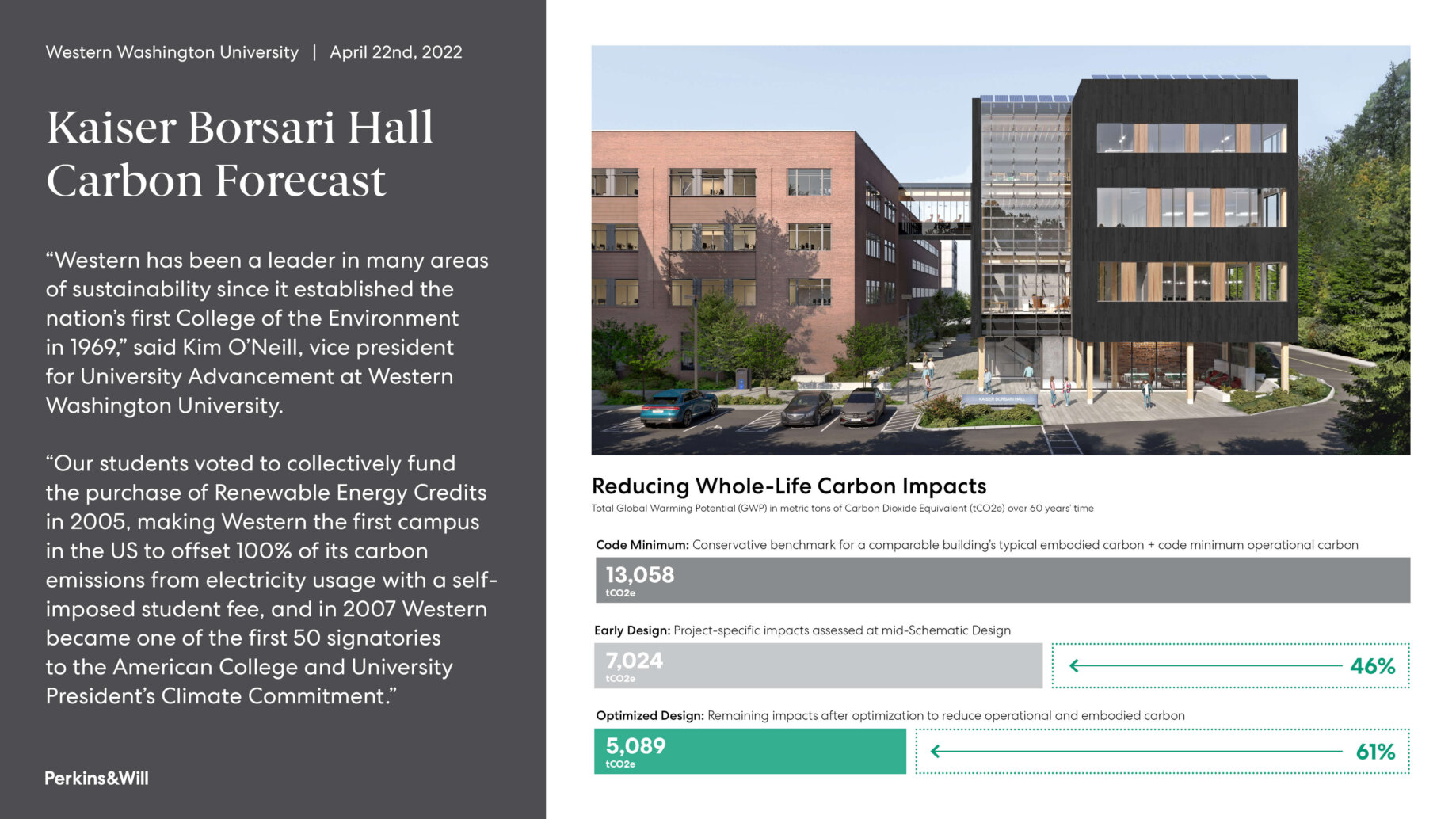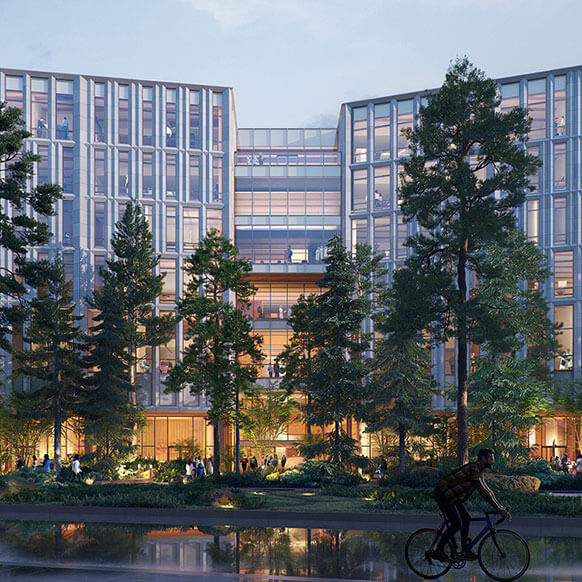Global architecture firm Perkins&Will, whose commitment to climate action through Living Design has earned critical acclaim, will issue its clients a “carbon forecast” for their projects—a tool to facilitate measurable and meaningful carbon reduction in the built environment.
Carbon forecasts will help clients understand—at the earliest stages of design—their projects’ carbon emissions from building design, construction, and operation (known as whole-life-carbon), as well as the impact of those emissions on human and environmental health. Most important, the forecasts will identify bespoke steps clients and project teams can take to reduce those emissions. These include:
- Strategies for realizing net-zero operational carbon immediately or in the near-term. Operational carbon, or the total amount of greenhouse gases (GHG) emitted during a project’s operation, can be reduced through passive design, minimization of energy loads, optimization of systems, disconnection from unclean fuel sources, and integration of renewable energy.
- Measures for realizing maximum reductions in embodied carbon. Embodied carbon, or the total amount of greenhouse gas emissions generated from the manufacturing, transportation, installation, maintenance, and disposal of building materials, can be reduced through the use of lower-embodied-carbon materials and quantified through whole-building life cycle assessments.
- Opportunities for enabling circular design. Carefully researched design solutions can minimize material waste, maximize material reuse, and optimize environments for material health.
“Firmwide, we’re investing in research and talent, emphasizing scientific rigor in our design process, and coordinating with global partners to effect change at scale,” says Kathy Wardle, principal and director of sustainability. “We’re applying all available industry tools and even building new ones, and we’ll benchmark performance and catalogue best practices as we go.”
As one of the largest architecture and design firms in the world, Perkins&Will can play a significant role in scaling up the industry’s carbon reduction efforts—not only because of its influence as a global design leader, but also through its vast portfolio of projects.
“Building owners, designers, constructors, and product manufacturers need to do their part in reducing whole-life carbon in buildings. This is an urgent and essential component of tackling climate change,” says Perkins&Will CEO Phil Harrison. “While many exemplary low-carbon projects have been built or are in design, the challenge before us now is to deliver low-carbon buildings at scale.”





